marine tourism best management practices a practical guide
marine tourism best management practices a practical guide
marine tourism best management practices a practical guide
Create successful ePaper yourself
Turn your PDF publications into a flip-book with our unique Google optimized e-Paper software.
Marine Tourism Best Management PracticesPeople For Puget Sound • pugetsound.orgEmission reductions of hydrocarbons (HC), nitrogen oxide (NO x), particulate matter(PM) and carbon monoxide (CO) are addressed with the most stringent requirementsphased in by 2007.The limits are set according to displacement (liter/cylinder). Please see EPA’s Officeof Transportation and Air Quality site at www.epa.gov/otaq/<strong>marine</strong>.htm and search for theOverview of EPA’s Emission Standards for Marine Engines, which is the first documentunder the Miscellaneous Documents category at the end of the page. EPA420-F-04-031.4. Oil Spill Prevention and Bilge Care:Argosy trains its captains and crew in both oil spill prevention and bilge <strong>management</strong>in its training course.Oil Spill Prevention:The company took fuel fills and moved them back to the aft deck from the side of theirvessels and installed catch basins.They train their staff to:(1) Place a bucket or plastic cup under the fuel drain line to catch the fuel whilebleeding the injector bleeding valve;(2) Use clean oil absorbent pads in the bilge anytime oil is found in the bilge;(3) Remove oil saturated pads;(4) Pump the bilge or use absorbent pads to remove oil; and(5) Never use detergents or soaps to disperse oilAdditional bilge measures:• Regularly check fittings, fluid lines, engine seals and gaskets• Use suction oil changers or oil pumps that attach to a drill head• Turn off automatic bilge pumps and use them only when there is water in the bilge• Use a manual override switch for bilge pumps• Use hydrocarbon sensitive bilge pumps which shut off automatically when theysense oilAdditional fuel spill prevention measures:• Install automatic back pressure shut-offs on all fuel nozzles• Do not remove the holding clips from the nozzle• Do not allow fuel nozzles to be blocked in an open position• Use vent cups to capture fuel “burps” out the air vents• For fueling docks, use above ground piping that is double-walled and use a solenoidvalve at the point where the above ground and below ground pipes meet16



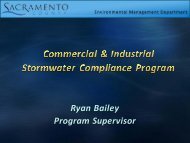
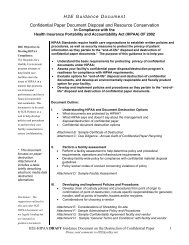
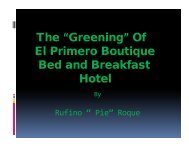
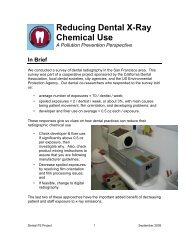
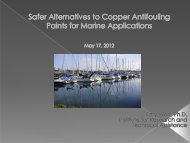
![Dental Amalgam Use [pdf]](https://img.yumpu.com/33828185/1/190x245/dental-amalgam-use-pdf.jpg?quality=85)




